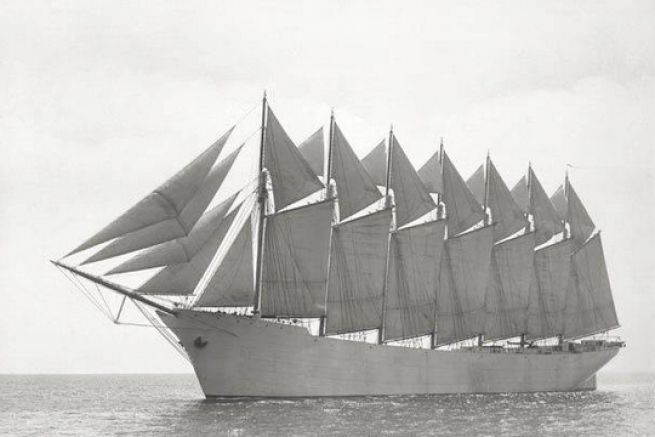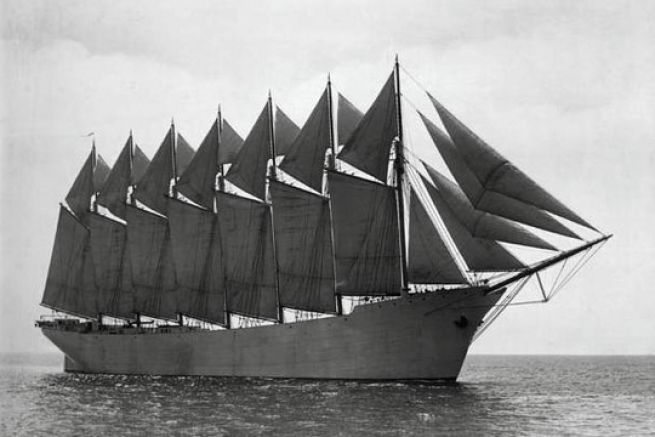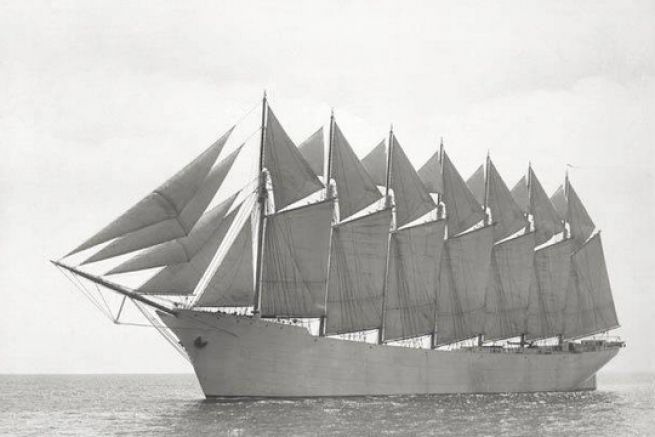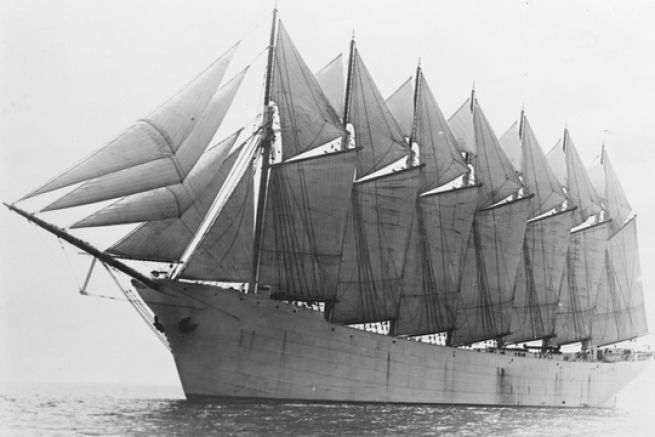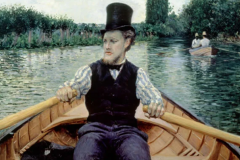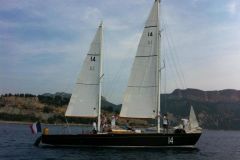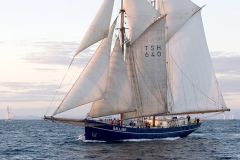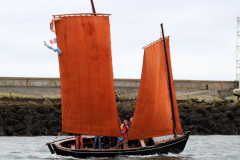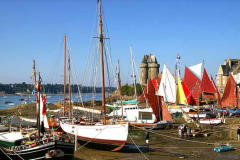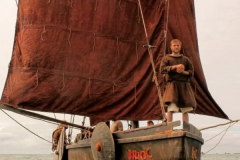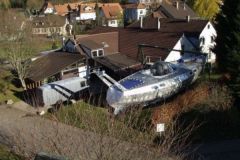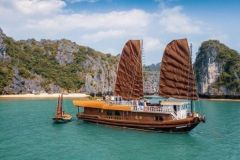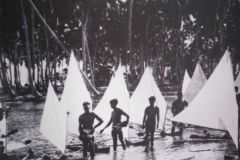The construction of the Thomas W. Lawson
It was designed by architect Bowdoin B. Crowninshield, known for his fast yachts. It was owned by John G Crowley's shipping company Coastwise Transportation Compagny of Boston, Massachusetts, and commanded by his brother, Arthur L. Crowley. Its construction began on June 25, 1901 at a cost of about $250,000. Thomas W. Lawson was the only schooner and sailboat with seven masts. Some reports say that Zheng He built nine-masted boats. The two largest sailboats with auxiliary engines were the French sailboat France II (1901) and the German sailboat RC Rickmers (1906), five-masted barque sailboats.
Basically, the Thomas W. Lawson was built to try to compete with the burgeoning market for freight ships, by showing the competitive aspect of sailing ships. However, the submerged hull of the vessel was too large and the sail too small to have good navigation capabilities. Especially since the forced reduction in load capacity - from 11,000 to 7,400 tonnes - considerably undermined the expected benefits.
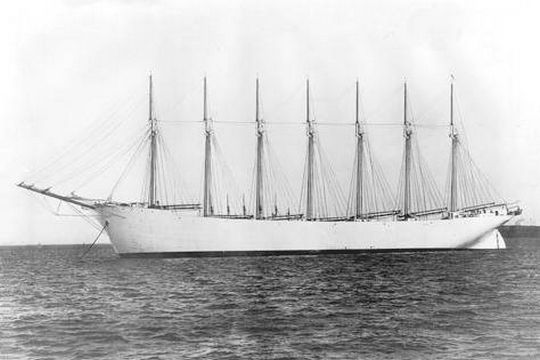
A schooner with a steel hull, with seven masts
The Thomas L. Lawson was launched on July 10, 1902 and measured 145 m (475 feet) overall and 120.4 m at waterline (395 feet). Its seven 58.8 m high masts had 25 sails (7 auric sails, 7 auric hoist sails, 6 hune stay sails and 5 jib sails: staysail, jib, jib, jib, jib, topsail and balloon jib), all for an area of 4000 m2 of sail.
The designation of its masts has always been a major debate. In the original sail plan, and during construction, from front to back, the sails were called N° 1 to N° 7, the latter then taking the name of "brigantine mast". The masts then changed their names: forward, main, mizzen, brigantine, jigger, driver and pusher on launch, to become, forecastle, mizzen mast, mizzen, jigger and brigantine, after launch. Later, many names were given to the masts such as "fore, main, mizzen, rusher, driver, jigger and spanker" or "fore, main, mizzen, N° 4, N° 5, N° 6 and N° 7", the crew's preferred name (which introduced a misunderstanding between "fore" which meant foremast and mast n° 4[furnace mast]). There was even talk of calling the sails like the days of the week, the foremast called Saturday and the brigantine mast called Sunday.
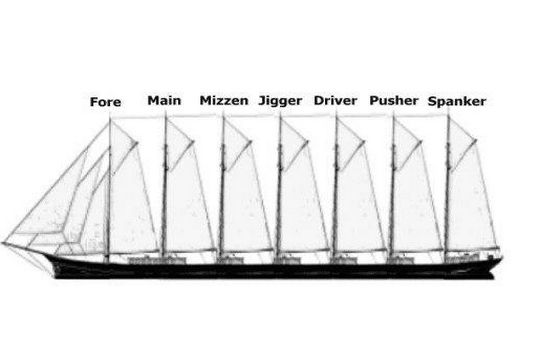
The boat consisted of a steel hull with a large bulwark and a double bottom with a depth of 4 feet. The ballast contained 1000 tonnes of water. With a weight of 5218 gross tons, it was capable of carrying nearly 11,000 tons of coal and was operated by a crew of 16 to 18 sailors, including the master, engineer, two helmsmen and two stewards. Due to the shallow depth of the eastern United States ports, with the exception of Newport, he could not enter with his maximum cargo. As a result, the cargo had been reduced to 7400 tonnes.
It consisted of two continuous decks, the poop and the forecastle. On the cabin was the captain's room with beautiful furniture and leather armchairs, the canteen and officers' rooms, the chart room and a room with a separate rudder.
On the main deck, there were deckhouses around mast No. 5 and behind mast No. 6, as well as 6 hatches to access the hold. Two huge steam winches were built under the forecastle and behind mast No. 6 on the main deck. Small electric winches were installed next to each mast. The boiler exhaust gases were on either side, horizontally. Each lower part of the 7 steel masts was reinforced with five lower shrouds on each side and six for the foremast. The hune masts were reinforced with hune shrouds on each side of the spreaders. The vessel's two anchors each weighed 5 tonnes.
A merchant ship transformed into a coal carrier
Thomas W. Lawson was often criticized by marine writers and some sailors for being difficult to manoeuvre and slow. It was even compared to a bathtub or a beached whale. The vessel proved to be problematic in the ports due to the quantities of water it was moving during operation. He tended to swerve and needed a strong wind to stay on course. Originally built for trading activities in the Pacific, the schooner was eventually used as a coal ship along the east coast of the United States.
A year later, in 1903, Crowley withdrew it from the coal trade. His hune masts, his auric rigging and all his wooden stringers were removed. It was transformed into a barge for transporting oil. In 1906, it was reunited as a sailboat with the Newport News Shipbuilding and Drydock Company. It then became an oil bulk carrier using the lower part of the steel masts to evacuate the oil gases from the holds. Its capacity was 60,000 barrels. Chartered by Sun Oil Company, it was the only sailboat in the world to transport oil carrying bulk hydrocarbons from Texas to the East Coast.
